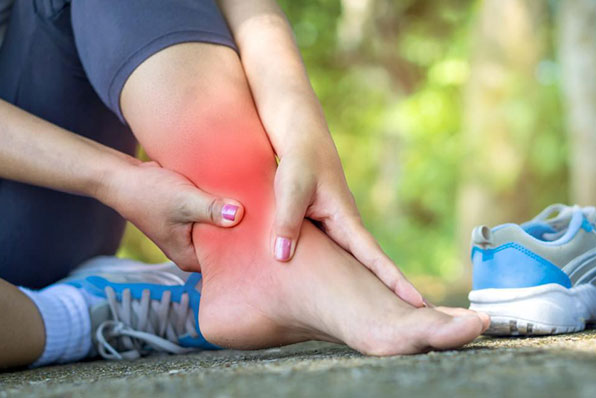
Ankle Injuries : What You Should And Shouldn’t Do.
If you hear about an ankle injury, you normally just assume that it is a sporting injury. It must have twisted when running or doing a tackle. That’s a common myth. It really can happen to ANYBODY.
Ankle injuries are so common and can happen to anyone at any age. A recent study showed that over 5 people in every 1000 visit A&E with an ankle sprain each year. That’s over 350 thousand injuries every year!
Your ankle is a complicated piece of machinery, with 3 bones that lead into it. The foot is then made up of 26 bones that all play an important role in distributing the weight and making sure that you can balance. All of this is kept in place by ligaments, tendons and muscles.
If you do get an ankle injury, then it is most likely that you will have damaged the soft tissue.
The most common symptoms of an ankle injury are,
- - Swelling
- - Pain
- - Bruising
But, there is definitely nothing to worry about, swelling is just the body’s natural way of protecting the part of you that is injured.
If I told you that you needed to ice your injury because it was ‘acute’ would you know what this meant?
If you don’t, then please check out my last blog about injury icing.
But, do you know why you put ice on your injury?
If you search this in Google, you might find the PRICE protocol (PROTECTION, REST, ICING, COMPRESSION, ELEVATION) which has been the go-to treatment for ankle injuries for many years. It does have a great effect and help with recovery, but it might not be the best way to get you back into action.
Or, you might have seen the acronym POLICE (PROTECTION, OPTIMAL LOADING, ICING, COMPRESSION, ELEVATION). Basically, rest has been replaced by Optimal Loading. But what does that mean?
It means that you need to gradually start adding weight on the injury with the help of your Physiotherapist.
So, what should you be doing?
Whilst the ankle is inflamed for the first 3-4 days, use PEACE :
Protection - Avoid any aggravating activities/movements and take the weight off your ankle.
Elevate - Elevate the limb higher than the level of the heart to promote fluid to flow out of tissues and reduce swelling.
Avoid Anti-Inflammatory Medication – it could disrupt the inflammatory process.
Compression –The use of taping or bandaging helps reduce swelling and bruising.
Educate – research the benefits of an active approach to recovery and establish realistic expectations about how long it will take to recover. There is not going to be a magic cure! Some therapies can actually be negative for your recovery, so make sure you know the impact that certain treatments such as electrotherapy or acupuncture have on your injury in the early stages.
The things to avoid can do you HARM :
- Heat
- Alcohol
- Running
- Massage
Once you have got through the first phase, we need to give our ankle some LOVE;
Load - Optimal loading without pain helps to promote tissue repair.
Optimism – Be positive! A positive approach and realistic expectations can help with your recovery.
Vascularisation – Start with pain-free cardiovascular exercise (eg: swimming) in order to build confidence as well as increased blood flow to the injured part.
Exercise – You can get back your mobility, strength and balance. This will greatly reduce the risk of you reinjuring yourself.
I am sure that this will help you if you have an ankle injury and give you the confidence that you will know the right approach to follow. If you have any questions for me, please either email me or call me at the office and I will do my best to give you the answers you need.
Come in to see us at our Physiotherapy Clinics in Sittingbourne and Maidstone if you have a Sports Injury. We will be able to help you!

 01622 94 20 33
01622 94 20 33 admin@xcelhealth.co.uk
admin@xcelhealth.co.uk

